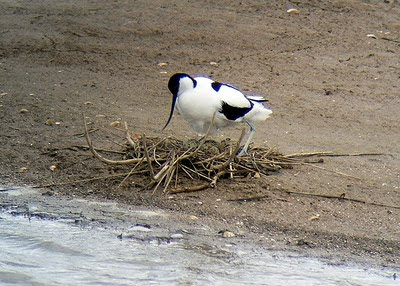Minsmere in May
The may bank holiday should conjure up images of a warm spring day, eating alfresco and the chance to escape to the seaside. Well, escaping to the seaside certainly was on my mind as I set off from Woodford to pick my friend Ed up from his home in Shenfield. The weather this weekend had been dire; the rains had come to perk the garden up but now a northerly wind was threatening to bring a bitter chill to the day.
Another early start and with a changeable sky, I met Ed, ate half a sliced pig between a couple slices of bread, all washed down with a decent brew.
Our main destination was Minsmere, the RSPB’s flagship reserve and monument to over 50 years hard graft to protect and promote this country’s incredible biodiversity. Ed had his recently acquired Bushnells which were sharp and clear – I was really impressed with the optic quality and handling of these binoculars. I had all my usual kit…minus my tripod strap which I stupidly forgot to attach.
On our way to Minsmere, I decided to stop off at Loompit Lake that butts up against Levington Marina, just north of Ipswich. There had been overnight reports of a small number of red-rumped swallows there along with barn swallows, house martins and sand martins and common swifts. We followed the directions and joined about half a dozen other birders stationed around one corner of the lake. It wasn’t long before the one remaining red-rumped swallow displayed in front of us. It came very close and gave excellent views. Naturally the big lens boys were there to capture some great images of a great bird. I had my little compact and managed to capture one image that resembles the bird anyway.
 |
| Red-rumped swallow, Loompit Lake |
We spent about an hour here, marvelling at the aerobatics of all these hirundines and swifts before heading off to Minsmere. Once I had the car facing the right way on the A12, it didn’t take long to reach the reserve. The weather was mixed. One minute rain, the next warming sun but all underlined by a gusting 40mph northerly wind. The sea was good enough to surf on with rollers crashing onto the pebbled beach and the Marram grass violently swaying. A lot of the smaller birds I expected to see in the early stages of our circuit were obviously keeping their heads down so pickings were slim. We did hear blackcap and whitethroat, recent arrivals from Africa. A whitethroat or two did briefly show along with a stonechat, tree pipit and meadow pipit in the dunes. Overhead, a few sandwich terns screamed and there was a cacophony of noise from the scrapes where many birds were fighting for territories, nest building and protecting their precious eggs.
 |
| Stonechat |
Our first stop was at the East hide. From here, we found common sandpiper, avocets, common redshank and oystercatchers. Most of the gulls were black-headed gulls with a few lesser black-backed gulls amongst them. There were around 100 sandwich terns on the islands, a few shelduck, shoveler, gadwall and around 13 barnacle geese. The hide was busy, probably due, not only to the bank holiday, but the weather. There seemed to be one big rain cloud that circled the reserve for most of the day and every hour or so, it would give us a gentle soaking.

We headed up past the sluice and viewed across the levels. There was one little egret and a little grebe in the nearby pools but little else. The wind was still making life difficult as we headed to the South hide. We arrived to find that a Montagu’s harrier had been seen minutes before but there was no sign of the female now. Ed found a couple of ringed plover and I filmed a stationary avocet that had previously been quite active, typical. Also common terns were in good numbers but we noted not a single marsh harrier had been seen so far. With lunchtime approaching, we decided to make a break for the Eel’s Foot Inn, a quirky name, originally thought to be an adaptation of a Heel’s Foot, a cobbler’s tool or more likely, after an Eel’s Boot, an old name for the woven baskets used to snare eels. Anyway, this 16th century inn certainly captured our delight. It’s a wonderful pub although very busy and a queue at the bar that was in single file! Very quaint and very British.
After a decent pint of Adnams (what else?) and spicy chili con carne, we headed back to the reserve. This time, we made our way to the Bittern hide where three otters had been sighted the previous day. No luck with this but we did get some amazing displays from marsh harriers. Next, we tried our luck at the Island Mere hide with more harrier aeriel antics to enjoy. On the way to the hide, we bumped into some roaming red deer. They were perfectly happy to be close to humans, one could almost think they belonged to someone as pets.
Our last stop was at the West hide. There was (somewhere) a Temminck’s stint on the scrape but damned if I could find it – but they are tiny. Altogether though, regardless of the stiff breeze and cold temperature, we had had a pretty good day.





Comments
Post a Comment